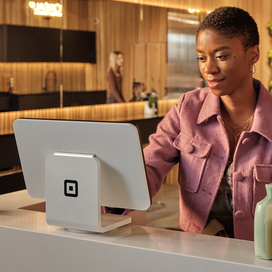Table of contents
This article is for educational purposes and does not constitute legal or tax advice. For specific advice applicable to your business, please contact a professional.
Looking to learn more about pricing gender-neutral haircuts? In addition to a growing demand from customers, there are multiple reasons why you should consider basing your pricing on the time, technique, tools used, and the length of hair rather than gender.
Today, gender-neutral haircuts are growing in popularity. Google Trends shows that searches for “gender-neutral haircuts” have jumped since 2004. On Pinterest, these searches have surged more than 10x from June 2021 to June 2022.
If you don’t currently offer this pricing model or are considering adding this pricing structure to meet customer demand, here are ways your business can begin implementing this approach.
Pricing on service complexity instead of gender
Examples of some gender-neutral pricing models include:
- Hourly rate: Pricing centered on the time it takes to complete each different service. Include a description of each service with an approximation of time and cost in the style menu. Square Appointments makes it easy for clients to set an appointment for a specific service with time duration, getting an estimate of the cost and then confirming the booking in one step.
- Technique: Rather than looking at time estimates alone, gender-neutral salon pricing can start with what service is being performed, such as a haircut or color. Salons can even upcharge for trendy options such as bright, vibrant color or razor cuts or designs that require more specialized skills. These techniques and upsells can add marketing value as well by adding them to the menu of services available.
- Scissor versus clipper cuts: Complexity of the style and the tools used to achieve that style can impact the time required as well as the cut technique. Pricing based on scissor cuts, wet or dry cuts, or clipper cuts can help clients get the specific service they want at an understandable price.
- Hair length: Pricing services on the length of a client’s hair helps create a reasonable expectation of cost and time in the chair. It takes more product to color or perm longer hair than shorter styles, and longer lengths often take more time to cut, wash, and style.
You can also use a combination of these pricing options to provide various services. For instance, “maintenance haircuts” can be offered in multiple pricing tiers alongside descriptions of hair length. Here’s a sample description: For guests seeking maintenance of hair between earlobe and shoulder length. Includes a consultation, shampoo experience, haircut, and blow-dry.
Gendered haircuts pricing regulations
Depending on where you live, a gender-neutral pricing model for salons might be covered by local regulations.
In some states, including California, New York, and Massachusetts, gender-based pricing is against the law. Those statutes forbid any form of gender-based price discrimination for the same products or services.
Business sense and customer experience
The true benefit of gender-neutral pricing extends to both your clients and your business. A pricing model based on the complexity or time duration of a service will allow you to be reimbursed most accurately for your labor and service.
It also reinforces your commitment to offer a service that helps clients feel their best selves. Not prejudging clients’ gender with pricing helps foster an inclusive, safe environment for everyone in your business. It can also align your business with others in the beauty industry, such as spas and nail salons, that also offer gender-neutral pricing.
Creating a service offering that is rooted in more equitable pricing practices can open your business to new clients and make it a more welcome environment for all. While it will take some strategy to determine a new pricing model and structure, it can be a solid business move and will put your company ahead of the curve when it comes to inclusivity and best business practices.
![]()











